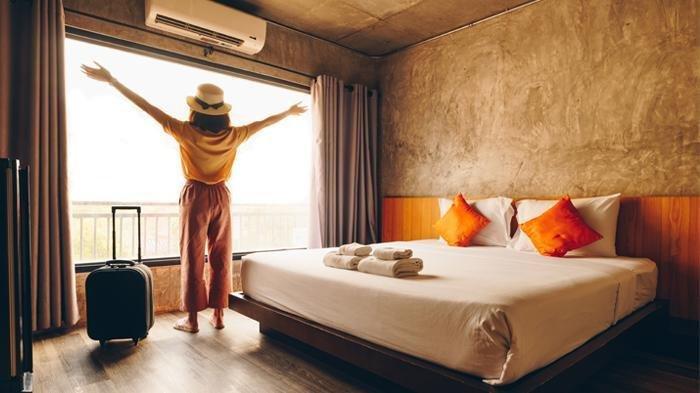The global workforce is undergoing a profound transformation, liberating millions from the confines of traditional offices and geographical limitations. This seismic shift, largely fueled by technological advancements and evolving professional paradigms, has given rise to a new demographic: the digital nomad. For these location-independent professionals, housing is not merely a place to rest but a crucial component of their lifestyle, blending workspace functionality with the comforts of home and opportunities for community. Today, Nomad Living: Future Housing Explored delves into the dynamic landscape of accommodation tailored for this burgeoning demographic, examining what defines these innovative living solutions, the powerful forces propelling their growth, and the transformative trends poised to shape their future. It’s a comprehensive look at how the world is becoming an office, and how accommodation providers are adapting to this borderless way of life, from bustling Southeast Asian hubs to serene European countryside.
The Digital Nomad Lifestyle

The digital nomad is more than just a remote worker; they are an individual who leverages technology to earn a living while traveling to different locations, embracing a lifestyle of perpetual movement and exploration. Their housing needs are distinct, demanding a seamless integration of professional functionality, personal comfort, and often, social connection. This unique blend has spurred the evolution of specialized housing solutions designed to cater to their transient yet productive lives.
At its core, digital nomad housing emphasizes:
A. Seamless Connectivity: Non-negotiable, reliable, high-speed internet (often fiber optic or 5G where available) is paramount, essential for video conferencing, large file transfers, and continuous online collaboration regardless of location. This is the lifeblood of the digital nomad.
B. Dedicated Workspaces: More than just a corner table, these accommodations offer ergonomic chairs, ample desk space, proper lighting, and readily accessible power outlets. Many provide separate work areas within the unit or access to dedicated co-working facilities on-site.
C. Flexible Lease Terms: Unlike traditional rentals, digital nomad housing offers booking flexibility, ranging from a few nights to several weeks or months, with easy options for extension or modification, catering to the often fluid nature of a nomad’s itinerary.
D. Home-like Amenities: For longer stays, full or well-equipped kitchenettes, laundry facilities, comfortable common areas, and ample storage space are highly valued, allowing nomads to maintain a semblance of a routine and reduce daily expenses.
E. Community and Networking Opportunities: While independent, many nomads seek social interaction. Housing solutions often foster community through organized events, shared lounges, and dedicated platforms, allowing residents to connect with like-minded individuals, share experiences, and even collaborate professionally.
Why Digital Nomad Housing is Exploding
The explosive growth of specialized digital nomad housing is not a temporary phenomenon but a structural shift fueled by profound changes in work culture, technology, and individual aspirations.
A. The Global Remote Work Revolution
The most significant catalyst is the widespread adoption of remote work by companies worldwide. Accelerated by global events, businesses discovered that distributed teams can be highly productive, leading to a permanent shift away from mandatory office presence for many roles. This instantly created a vast, global pool of individuals no longer tethered to a single city.
B. Pursuit of Work-Life Integration
Digital nomads actively seek to blur the lines between their professional and personal lives, desiring a lifestyle where they can seamlessly combine work with travel, exploration, and cultural immersion. Specialized housing facilitates this by offering environments conducive to both productivity and leisure, fulfilling a growing aspiration for a more fulfilling and flexible existence.
C. The Rise of “Bleisure” and “Workation”
Traditional business travel is evolving into “bleisure” (business + leisure) trips, where professionals extend work-related stays for personal enjoyment. Simultaneously, the “workation” trend sees individuals intentionally traveling to scenic or culturally rich destinations to work remotely for extended periods. Digital nomad housing directly caters to these longer, hybrid stays.
D. Advancements in Connectivity and Collaboration Tools
The exponential growth of high-speed internet infrastructure (including 5G expansion), sophisticated cloud-based collaboration platforms (e.g., Slack, Zoom, Microsoft Teams, Google Workspace), and project management software has made working remotely as efficient, or even more efficient, than being in a traditional office. This technological maturity is the ultimate enabler of the digital nomad lifestyle.
E. Desire for Community and Belonging
While the freedom of remote work is appealing, it can also lead to isolation. Digital nomads often seek built-in communities where they can connect with like-minded individuals, share experiences, collaborate on projects, and build social networks, combating loneliness and fostering a sense of belonging in a transient lifestyle. Dedicated housing models actively cultivate this.
Types of Digital Nomad Housing
The market has responded with a diverse and ever-expanding range of accommodation models, each tailored to different digital nomad profiles, budgets, and preferences.
A. Purpose-Built Co-Living Spaces
These are highly curated residential communities explicitly designed for digital nomads and remote workers. They offer private bedrooms and bathrooms, complemented by extensive, high-quality shared spaces like professional co-working areas, communal kitchens, lounges, gyms, and often vibrant event spaces. They prioritize community building, networking, and organized social activities. Examples include Selina properties, Outsite, and various independent co-living brands popping up in nomad hotspots.
B. Extended-Stay Hotels
Traditional hotel chains are adapting their extended-stay brands or launching new ones to cater specifically to remote workers. These properties offer larger suites with well-equipped kitchenettes, dedicated workspaces (ergonomic chairs, ample desk space), and reliable high-speed internet. They blend the comforts of a residential apartment with hotel services like less frequent housekeeping, on-site fitness centers, and sometimes business services, providing a familiar and convenient option.
C. Work-Friendly Boutique Hotels
Smaller, design-focused boutique hotels are differentiating themselves by offering not just unique aesthetics but also highly functional workspaces within rooms (e.g., proper desks, ergonomic chairs) and dedicated quiet co-working zones or business lounges on-site. They appeal to nomads seeking a more curated, stylish, and personalized experience with attentive service.
D. Optimized Short-Term Rentals
Platforms like Airbnb, Vrbo, and local Indonesian equivalents such as Traveloka’s Villa & Apartment listings, have become crucial. Hosts are increasingly optimizing their properties with features specific to remote workers: reliable high-speed internet verification, dedicated workspaces, power strips, and comfortable lighting. Guests can filter for these specific amenities, providing a vast and varied inventory for independent nomads.
E. Digital Nomad Villages or Hubs
These are comprehensive, often purpose-built or revitalized communities emerging in popular remote work destinations. They offer a mix of accommodation types (co-living, private rentals), extensive co-working facilities, strong community programs, curated local experiences, and often support services like visa assistance. Examples include projects in Madeira, Bali (like Canggu’s growing nomad community), and parts of Latin America, aiming to create full ecosystems for nomads.
Defining Optimal Digital Nomad Housing

What truly sets exceptional digital nomad housing apart from standard lodging? It’s a sophisticated blend of essential infrastructure, thoughtful design, and a service philosophy geared towards productivity and well-being.
A. Uninterrupted, Enterprise-Grade Internet Access
This is non-negotiable. It means fiber optic connections, redundant internet lines (failover systems), symmetrical upload/download speeds suitable for constant video conferencing and large file transfers, and secure, segmented Wi-Fi networks (e.g., separate guest and staff networks, optional VPN compatibility). Speed tests should consistently show high performance, and there should be transparent policies on internet usage.
B. Ergonomically Optimized Workspaces
Beyond just a desk, the workspace must support long hours of focused work:
- Ergonomic Chairs: Crucial for posture and comfort during extended sitting periods.
- Ample Desk Space: Sufficient surface area for a laptop, external monitor, notebooks, and peripherals.
- Proper Lighting: A mix of natural light, adjustable task lighting, and ambient light that reduces eye strain.
- Multiple, Easily Accessible Power Outlets: With universal adaptors or varied plugs to accommodate international devices.
- External Monitor Availability: Either as a standard amenity or available for rent, recognizing the multi-screen setup preferred by many professionals.
- Dedicated Work Zones: Whether an in-room nook, a separate room, or access to professional co-working spaces (with quiet zones).
C. Superior Soundproofing and Privacy Provisions
Minimizing distractions and ensuring confidentiality are paramount for remote professionals:
- Effective Soundproofing: Between private units/rooms, and from external noise sources (traffic, common areas), to facilitate deep work and undisturbed calls.
- Private Phone Booths or Call Pods: Designated, soundproofed spaces for confidential meetings or focused one-on-one calls, often found in co-working areas.
- Designated Quiet Zones: In shared co-working spaces, clear areas where conversation is discouraged, enabling deep concentration.
D. Fully Equipped, Functional Kitchens or Kitchenettes
For extended stays, the ability to prepare meals is a significant cost-saver and comfort enhancer, promoting healthier eating habits:
- Full Cooking Appliances: Stovetops, ovens (ideally), microwaves, and a refrigerator with freezer space.
- Comprehensive Cookware and Utensils: Sufficient pots, pans, dishes, and cutlery for comfortable meal preparation.
- Dining Area: A comfortable space within the unit to eat meals, distinct from the workspace.
- Basic Provisions: Sometimes includes complimentary basic cooking essentials like salt, pepper, oil, or welcome snacks.
E. Integrated Laundry Facilities
Access to washing machines and dryers, either conveniently located within the unit or in a communal laundry room on-site, is a huge convenience for long-term remote workers, significantly reducing expenses on external laundry services.
Challenges and Opportunities in the Evolving Landscape
The rapid expansion of digital nomad housing presents both significant challenges and vast opportunities for all stakeholders – from property owners and operators to local governments and, of course, the nomads themselves.
A. Regulatory Hurdles and Legal Compliance
Challenge: The rapid, often organic, growth of digital nomad housing has frequently outpaced existing urban planning and tourism regulations. Local governments grapple with balancing the economic benefits these mobile professionals bring (spending, skill transfer) with concerns over housing affordability for long-term residents (especially in popular hubs like Bali or Lisbon), neighborhood disruption (noise, transient populations), and fair taxation. This leads to a complex, often inconsistent, patchwork of evolving regulations, including specific digital nomad visas, licensing requirements for short-term rentals, zoning restrictions, and tourism taxes, creating legal uncertainty for both hosts and nomads.
Opportunity: As governments increasingly recognize the economic and social value of digital nomads, clearer and more standardized regulations are emerging. These can legitimize the industry, foster trust, and provide a stable, predictable environment for responsible growth, encouraging long-term investment and innovative development in dedicated nomad-friendly zones. Dialogue between industry players and local authorities is key to finding mutually beneficial solutions.
B. Maintaining Quality and Consistency Across a Diverse Portfolio
Challenge: Unlike standardized hotel chains, the quality, amenities, and service levels across millions of diverse digital nomad housing options (from a spare room on Airbnb to a luxury co-living space) can vary wildly. Issues with cleanliness, inaccurate listing descriptions, unreliable internet, poor communication from hosts, or unexpected problems can quickly lead to negative guest experiences and damage the reputation of the specific property or even the broader industry.
Opportunity: Professional property managers and established co-living brands are setting higher standards. Platforms are investing in more rigorous quality assurance programs, verification processes (e.g., verified internet speed), and host education. This professionalization ensures consistent high standards, attracting more discerning nomads and building crucial brand trust. User reviews and ratings also serve as powerful quality control mechanisms.
C. Neighborhood Integration and Community Relations
Challenge: High concentrations of transient digital nomads can sometimes strain local resources (e.g., public utilities, healthcare), increase traffic, alter neighborhood character, and lead to resentment from long-term residents due to noise, perceived gentrification, or reduced community cohesion. This is a common issue in popular nomad hubs such as Canggu, Bali.
Opportunity: Responsible operators and proactive nomad communities engage with local residents, implement “good neighbor” policies (e.g., noise monitoring, respectful waste disposal guidelines), actively contribute to local services (e.g., through local employment, supporting small businesses), and promote respectful guest behavior. This fosters positive relationships, demonstrates local benefits, and helps integrate the nomad community into the existing social fabric.
D. Intense Competition and Market Saturation
Challenge: The relatively low barrier to entry means many individuals and businesses can become digital nomad housing providers, leading to market saturation in popular hubs. This intense competition can drive down pricing for generic listings and make it challenging for properties to differentiate themselves.
Opportunity: Innovation in unique offerings, highly specialized niches (e.g., family-friendly nomad housing, pet-friendly co-living, wellness-focused work-stays, specific professional communities), superior personalized guest service, and strong branding allow properties to stand out, attract targeted demographics, and command premium rates based on value, not just price.
E. Technology Adoption and Management for Hosts
Challenge: While technology drives the industry, individual hosts or small operators need to be sufficiently tech-savvy to manage complex listings, implement dynamic pricing strategies, communicate effectively across multiple platforms, and potentially integrate smart home devices (e.g., smart locks, energy monitors). This complexity can be a barrier for less technologically inclined hosts.
Opportunity: Platforms are continuously improving their user-friendliness and offering integrated tools. Specialized property management software and services are becoming more sophisticated and accessible, democratizing access to advanced tech and professional management for hosts of all sizes, allowing them to scale their operations.
A Guide for Travelers & Hosts
Understanding the evolving nature of digital nomad housing is crucial for both guests seeking ideal work-life environments and hosts looking to maximize their properties’ appeal and profitability.
For Digital Nomads/Travelers:
A. Prioritize Connectivity: Never compromise on internet quality. Before booking, inquire about actual upload/download speeds, redundancy (backup internet), and security (private networks, VPN compatibility). Read reviews specifically mentioning Wi-Fi performance.
B. Define Your Workspace Needs: Understand your ideal work setup. Do you need a private, quiet room with an ergonomic chair and external monitor, or are you comfortable in a shared co-working space? Filter listings accordingly.
C. Confirm Flexibility of Stay: Look for accommodations offering weekly or monthly rates with transparent and flexible extension/cancellation policies, crucial for adapting to fluid travel plans.
D. Research the Community Aspect: If social connection is important, investigate the property’s community events, shared spaces, and online groups. Read reviews about the social atmosphere to see if it aligns with your preferences.
E. Assess Overall Value, Not Just Price: Factor in all inclusions (utilities, cleaning, co-working access, gym) when comparing costs. A slightly higher rate might offer better amenities and save money in the long run.
For Hosts/Property Owners:
A. Master Local Regulations: Thoroughly research and comply with all local short-term rental laws, digital nomad visa regulations (if applicable), licensing requirements, and taxation rules in your area (e.g., in popular Indonesian destinations). Non-compliance is a major risk.
B. Invest in Premium Connectivity: Offer truly high-speed, reliable, and redundant internet. Consider dedicated business-grade lines or even satellite internet like Starlink for remote properties. Market your internet speed transparently.
C. Create Dedicated, Ergonomic Workspaces: Go beyond a simple desk. Provide ergonomic chairs, good lighting, ample power outlets, and ideally, an external monitor or the option to rent one. Highlight these features prominently.
D. Professionalize Your Operations: Utilize property management software for seamless booking, guest communication, and cleaning schedules. Automate check-in/out. Invest in professional cleaning for consistent quality.
E. Optimize Your Listing for Nomads: Use high-quality photos that showcase workspaces. Write detailed, keyword-rich descriptions highlighting all nomad-friendly amenities (internet speed, kitchen, laundry, co-working access, soundproofing).
Conclusion
The evolution of digital nomad housing marks a pivotal moment in the history of global living and working. Driven by a powerful combination of technological innovation, humanity’s innate desire for freedom and exploration, and new economic paradigms, this sector has moved far beyond its nascent beginnings. While navigating complex regulatory landscapes, ensuring consistent quality, and fostering genuine communities, digital nomad housing providers are continuously innovating, offering hyper-personalized, sustainable, and deeply integrated living experiences. They are not just providing a place to stay; they are redefining the very concept of “home” for a generation of professionals who see the world as their office. The future of work is undeniably global, and the future of housing is increasingly tailored to this borderless reality.













